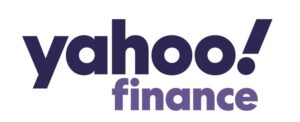By Adrian Maddox
In a materialistic world, it can be difficult to stay up to date with all the latest trends in fashion and technology. Luckily, apps like Klarna and Afterpay allow young users to split purchases up into four increments to be paid every two weeks. Split payments and receiving your purchase five business days after you placed your order sounds great, right?
But what happens when you don’t have the money in your account? What happens when you have racked up a bi-weekly payment of $400 that needs to be paid Thursday and you don’t get paid until Friday? These are all real situations that can and have happened when using split-payment apps like Klarna.
I became aware of the app Klarna when shopping on Lululemon’s website one afternoon two years ago. I really wanted a new pair of leggings, but I didn’t get paid for a week and $100 for one pair of leggings felt unreasonable to spend on myself. In comes Klarna, a bright pink app with the promise of zero percent interest with safe and secure payment methods for hundreds of retailers. I may have googled around a couple of times before clicking the bright red “check out” button on Lululemon’s website and putting my debit card information into Klarna’s mobile app.
Two weeks later, I get billed $20 as part of the payment plan, I had set up with Klarna. I had completely forgotten I had even purchased the leggings at this point. I had more than enough money in my bank account to cover the $20, but it worried me that I had completely forgotten that I had a payment coming up and that it would automatically be taken out of my bank account.
Though Klarna gives users the opportunity to change payment dates, it will charge late fees if payments are not made on time. According to NerdWallet, Klarna offers benefits like having a zero-interest loan but also can harm users through automatic payments and late fees. While this gives users the opportunity to wait to make a payment until payday, you might end up spending more than your original purchase.
Fast forward to November 2022. These past two months have been difficult for me as I navigate paying for rent for the first time, alongside the rising cost of living and groceries. I took a trip last month which required business casual clothing, which required an online shopping spree at The Gap. Again, I clicked the shiny “check out” button and typed my bank card information into Afterpay with very little thought. This time I received a text message that my last payment for this purchase would be charged to my bank card. The only problem was that I had money tied up in an in-store return and was cutting close between what was in my bank account and what I was expected to pay to Afterpay.
Afterpay does not give users the option to change payments. Had I not made my payment on time, I would not have been able to make another purchase until I paid off the first purchase. According to Investopedia, the app doesn’t report late payments, meaning your credit will not be impacted. However, consistent late payments may be sent to collections, and consistently paying your bill on time does not reward you with bonus points on your credit score.
Ultimately these apps come down to personal financial responsibility and the ability to remember upcoming payments. If you are someone who must make 12 reminders to pay your rent, this might not be the right option when it comes to buying expensive items. Afterpay and Klarna have given me the ability to purchase items that I otherwise wouldn’t have bought. I still use these apps when making large purchases I hadn’t budgeted for or during the holidays when the app gives special deals and rewards for shopping through the app.
Adrian Maddox is a student at the University of Missouri





